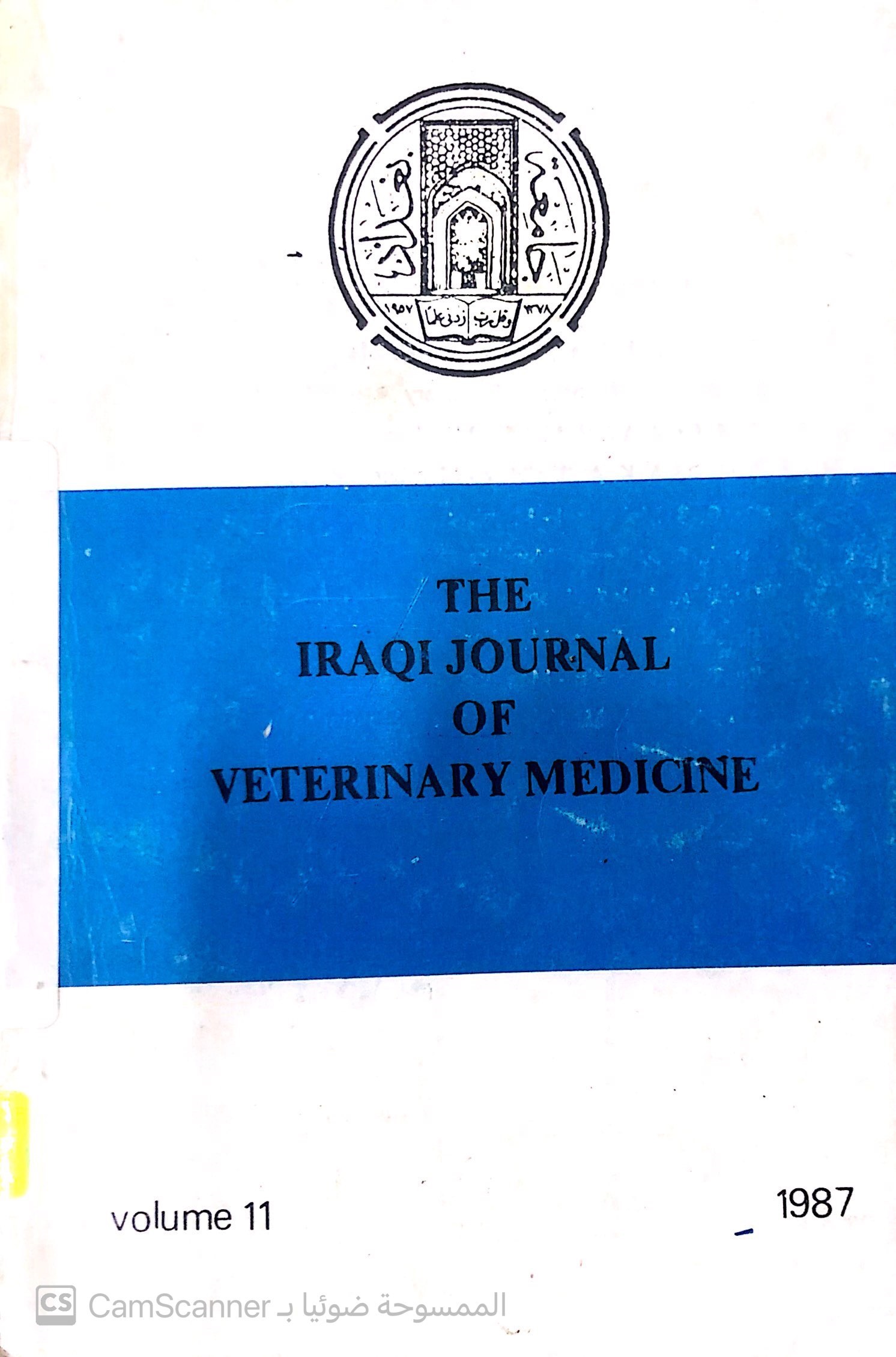EOSINOPHILIA IN EXPERIMENTAL FASCIOLIASIS IN GOATS INFECTED WITH SHEEP AND BUFFALO ISOLATES OF FASCIOLA GYGANTICA
Main Article Content
Abstract
Twenty one male goats 3-4 months of age were exposed to five metacercariae per kg. of body weight of two isolates of Fasciola gigantica obtained from sheep and buffalo. Eosinophilia was mostly marked after prepatency in goats infected with sheep isolate.
Downloads
Article Details
How to Cite
Publication Dates
References
Al-Kubaisee, R.Y. (1986). A comparative study of sheep and buffalo isolates of Fasciola gigantica in snail Lymnaea auricularia and goats. M. ‘Sc. thesis, University of Baghdad.
Al-Naamy, R. A. S. (1978). Studies on some aspect of ovine fascioliasis in Iraq with particular reference to pathology and haematology of the disease due to Fasciola gigantica infection. M.Sc. thesis, University of Baghdad.
Archer, G. T., Robson, J.E. and Thompson, A.R. (1977). Eosinophilia and Mast cell hyperplascia induced by parasite phospholipid. Path. 9: 137-153.
Cornwell, R. L. (1962). Blood eosinophil response of calves to normal and irradiated larvae of Dictyocaulus. J. Comp. Path. 72: 170-180.
Monsinger, R. W., Silverstein, D. and Arsdel, P.P. Van (1972). The eosinophil and allergy, why? J. Allergy Clin. Immunol. 49: 142-155.
Hussein, M. F. (1971). The pathology of experimental Schistosomiasis in calves. Res. Vet. Sci. 12: 246-252.





